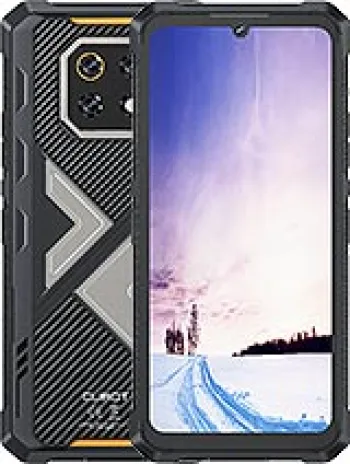
Overview of Cubot U1
The Cubot U1, announced in February 2025 and released shortly thereafter, offers a unique blend of functionality and design within the tech market. While it doesn't boast cutting-edge specifications, the U1's simplicity and targeted features make it a potential choice for specific users. In this article, we delve deeply into all aspects of the Cubot U1 to understand its place within the broader landscape of wearable devices.
Design and Body
The Cubot U1 has compact dimensions, measuring 49.8 x 42.4 x 11.4 mm (1.96 x 1.67 x 0.45 in) and weighing merely 43.8 g (1.55 oz), making it a lightweight and portable option suitable for daily use. The minimalist design is available in classic Black and attractive Pink colors, catering to both subdued and vibrant aesthetic preferences. Although it lacks cellular connectivity or a SIM slot, its design remains elegant and straightforward.
Display Attributes
The device's 1.93-inch TFT LCD display is clear and utilizes a resolution of 240 x 288 pixels, translating to approximately 194 ppi density. While this might not deliver the crispness of higher-end displays, it offers sufficient clarity for basic visual tasks. The size is optimal for functions typically expected of a device in this category, ensuring readability without excessive bulk.
Battery Life
Equipped with a 300mAh battery, the Cubot U1 promises moderate battery life suitable for day-to-day operations. Given its simple operating system and minimal connectivity demands, users can expect reasonable performance over a single charge. This capacity certainly caters to the needs of casual users who anticipate refueling their device for periodic operations rather than continuous use.
Network and Connectivity
The device stands out primarily due to its lack of cellular connectivity. However, the Cubot U1 compensates with Bluetooth 5.4, A2DP, and LE support. The absence of WLAN, NFC, and positioning capabilities denotes its design as less of a standalone digital device and more of a complementary accessory in an established device ecosystem.
Operating System and Performance
Running on a proprietary operating system, the Cubot U1 is tailored specifically for its hardware. This OS choice often results in efficient power management and performance for the limited tasks the device is designed to handle. With just 16MB of internal storage and no card slot for expansion, users access the essential functions ideal for a device of its class.
Memory and Storage
Featuring 16MB of internal memory, the Cubot U1 is not intended for intensive data storage or app functionality. There is no card slot for expandable storage, underscoring its role as a minimalistic device designed for utility rather than media consumption or extensive app engagement.
Sensor Technology
Despite its basic nature, the Cubot U1 is equipped with essential sensors including an accelerometer, gyro, heart rate monitor, and SpO2. These sensors provide fundamental health monitoring features, offering users insights into their physical activities and fitness levels, making it particularly useful for health-conscious individuals.
Sound Capabilities
Sound features on the Cubot U1 include a built-in loudspeaker, though it lacks a 3.5mm headphone jack, which is notable for users wishing to connect standard headphones. Sound output is clearly appropriate for notifications and alerts, keeping users attentive to device activity without overwhelming auditory demands.
Miscellaneous Features
While some advanced features typically found in more sophisticated smart devices are absent, the Cubot U1 maintains essential functionalities that align with its intended use. This cautious approach ensures reliability for users needing straightforward, dependable operations without unnecessary complexity.
Conclusion
In sum, the Cubot U1 represents an intriguing option for consumers seeking a basic, wearable device primarily oriented towards essential monitoring with limited connectivity. Its compact design, critical health sensors, and reliable performance make it apt for users with minimalistic tech needs or those supplementing their primary devices. While not suitable for all user demographics, its precise targeting of specific functionalities ensures it meets the expectations of its intended audience.
Key Features of Cubot U1
- Compact Dimensions: 49.8 x 42.4 x 11.4 mm
- Lightweight: Only 43.8 g for easy wearability
- Display: 1.93 inches TFT LCD with 240 x 288 pixels resolution
- Bluetooth 5.4: A2DP, LE for wireless connections
- Sensors: Includes accelerometer, gyro, heart rate, and SpO2 sensors
- Battery: 300 mAh for extended use
- Available Colors: Black and Pink
Cubot U1 Main Disadvantages
- No cellular connectivity.
- No SIM support.
- Limited internal memory of 16MB with no card slot for expansion.
- Lacks a built-in camera.
- No 3.5mm headphone jack.
- No WLAN/Wi-Fi support.
- No built-in positioning system (GPS).
- Absence of NFC technology.
- No radio functionality.
- USB connectivity is not available.

View Also
More Phones
All Rights Reserved +14042 Phones © Mobilawy 2025

























